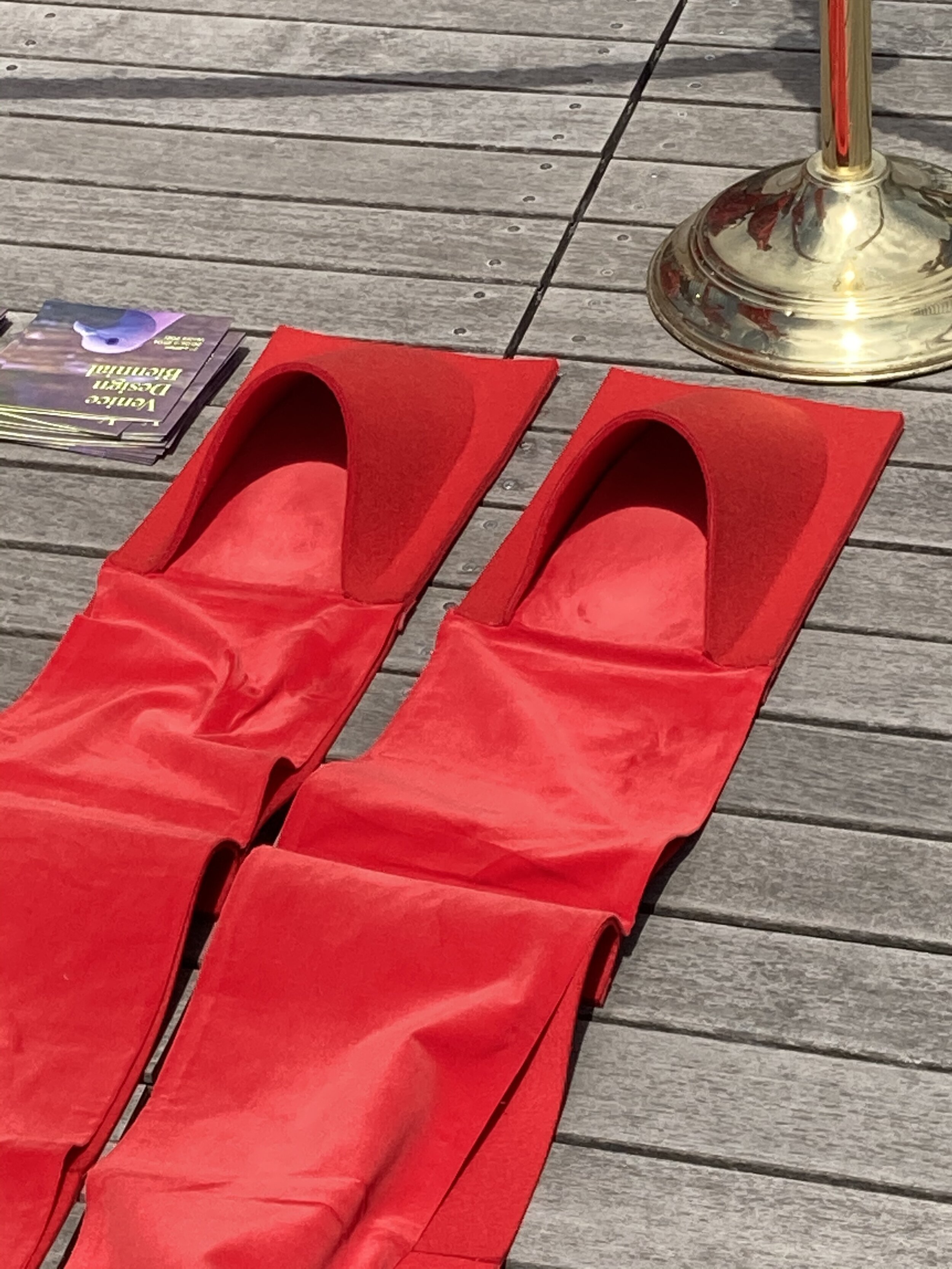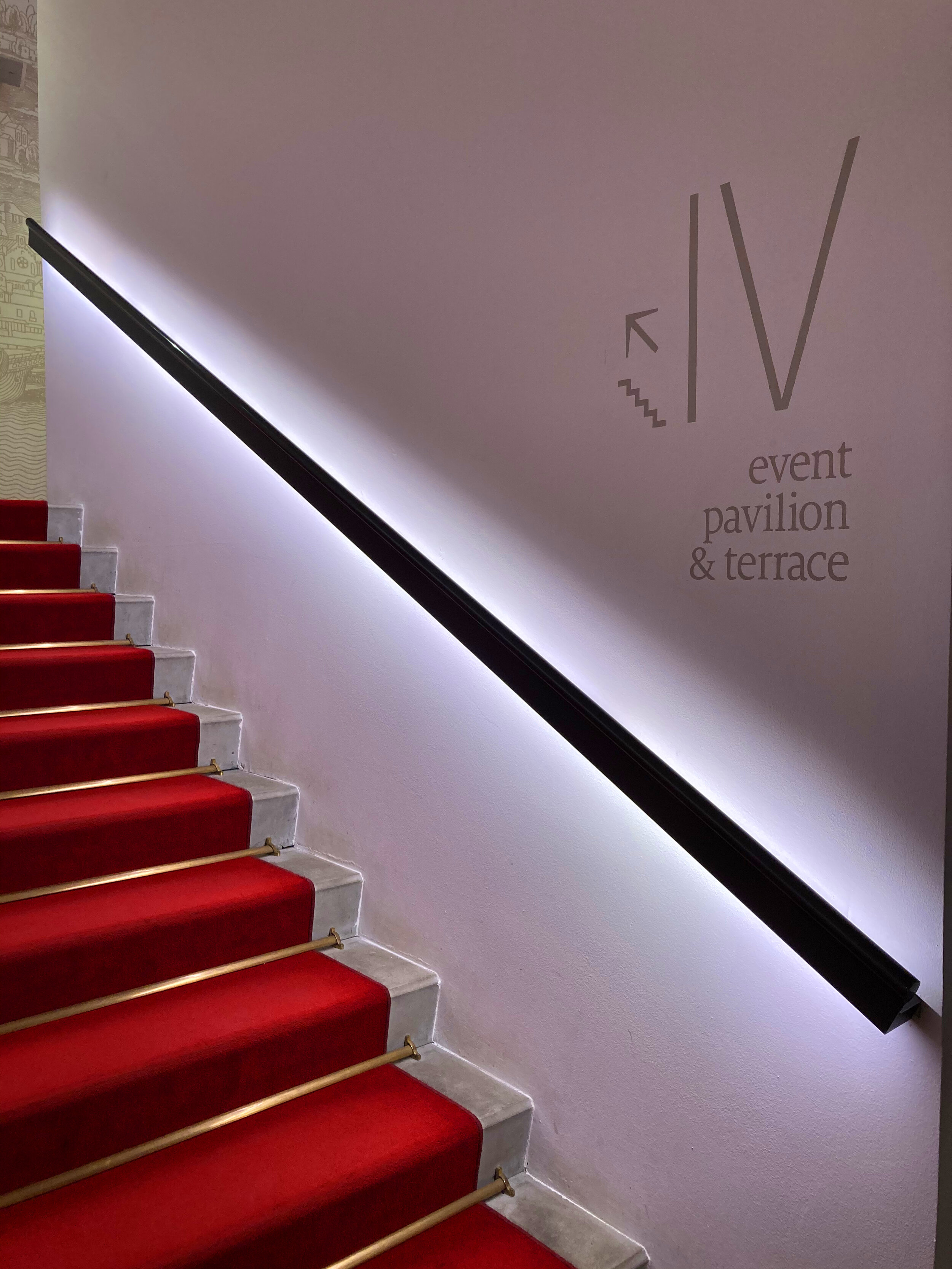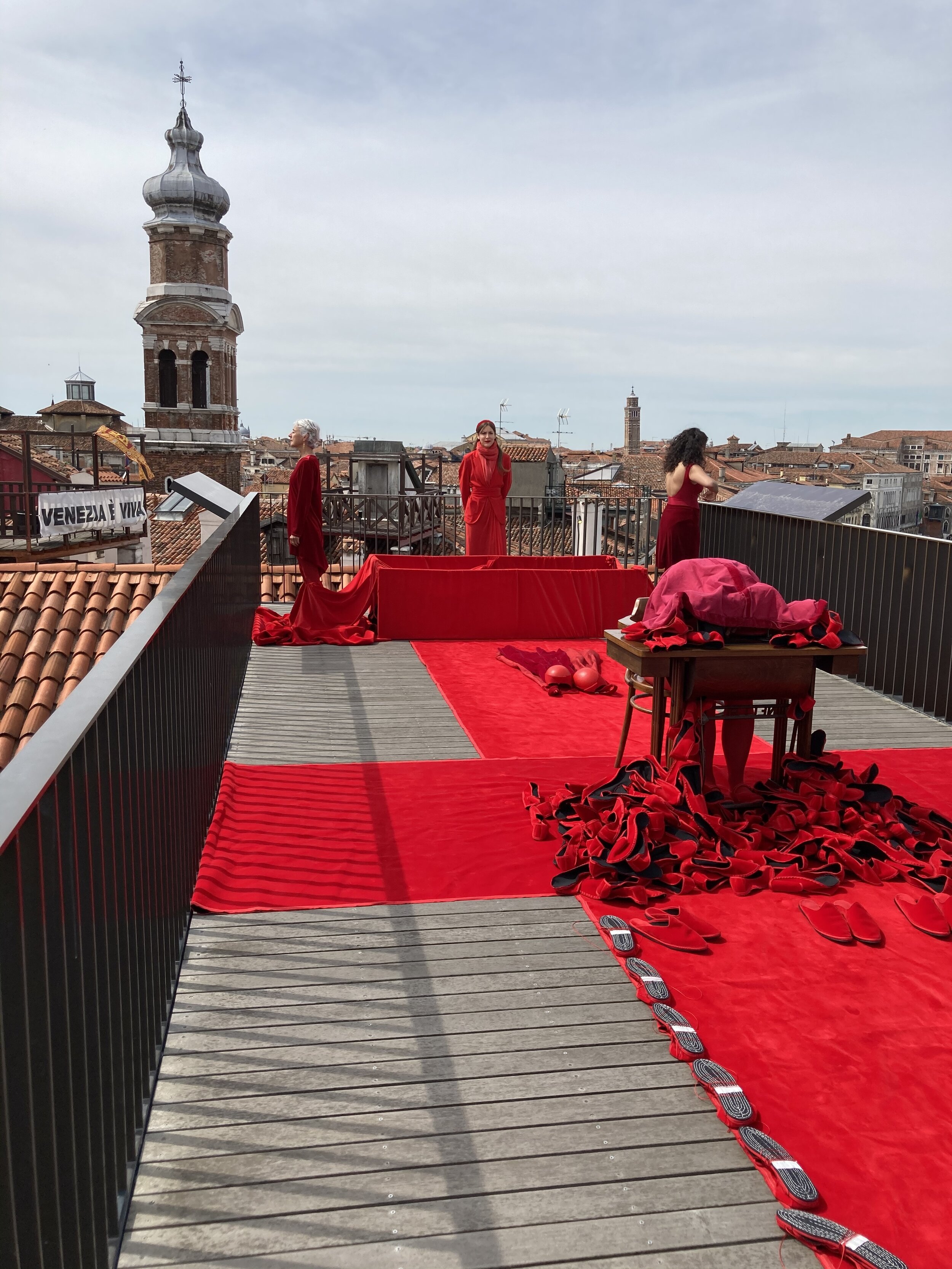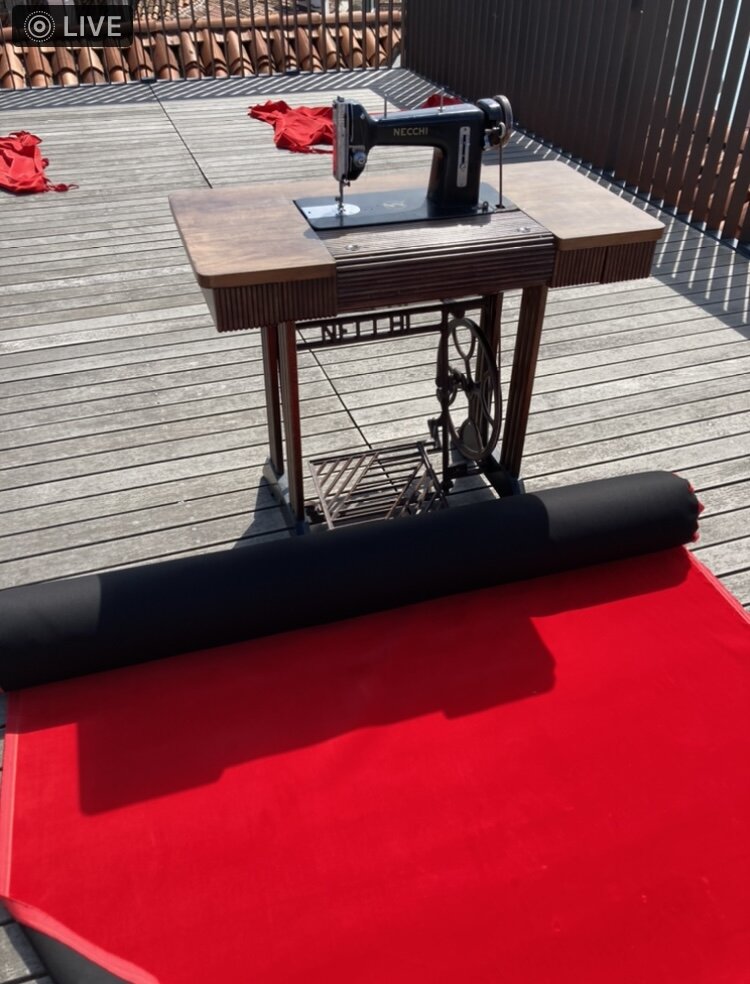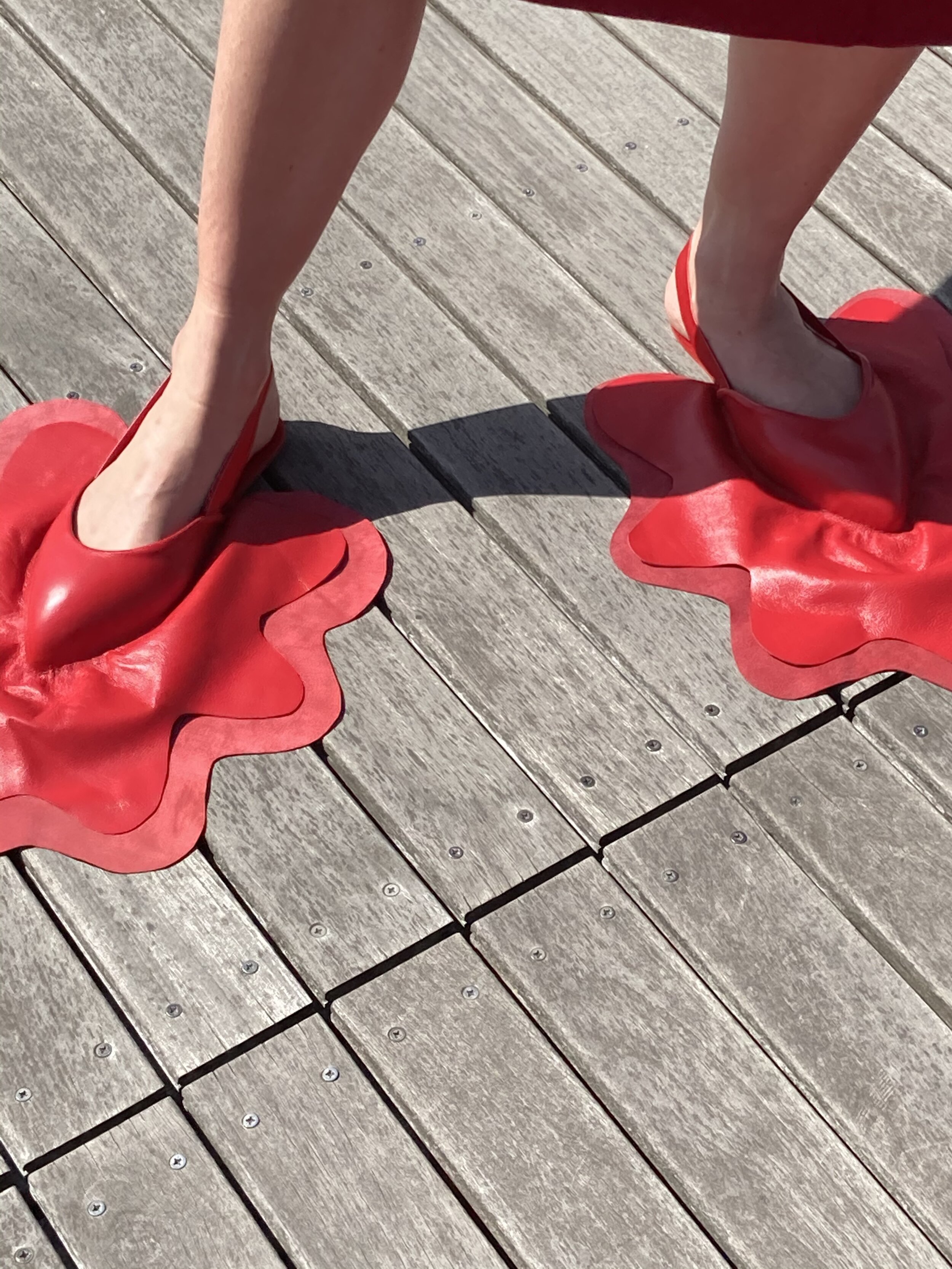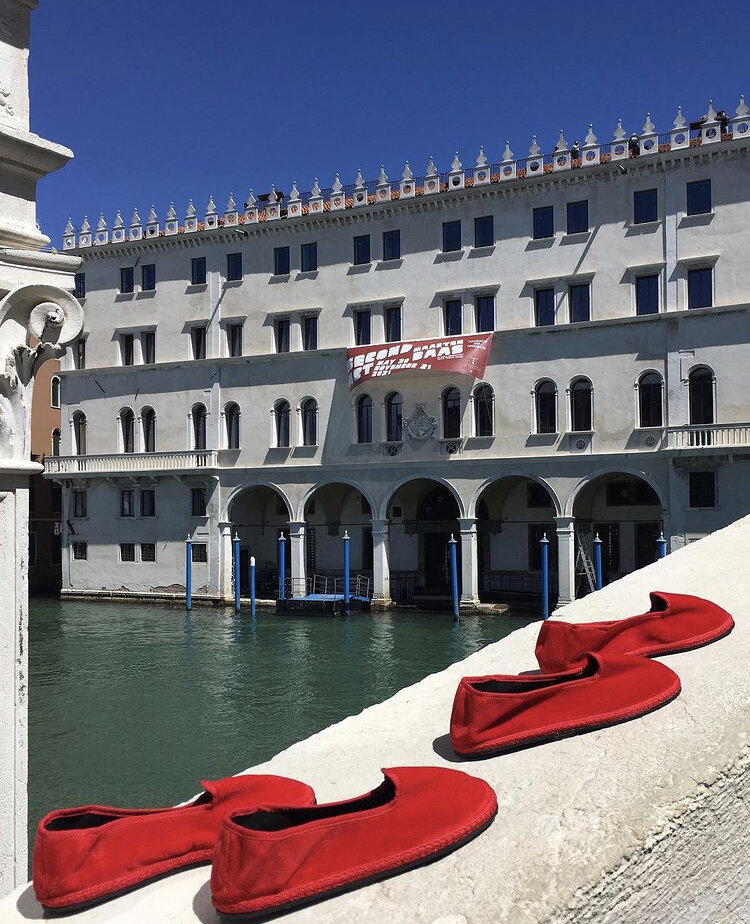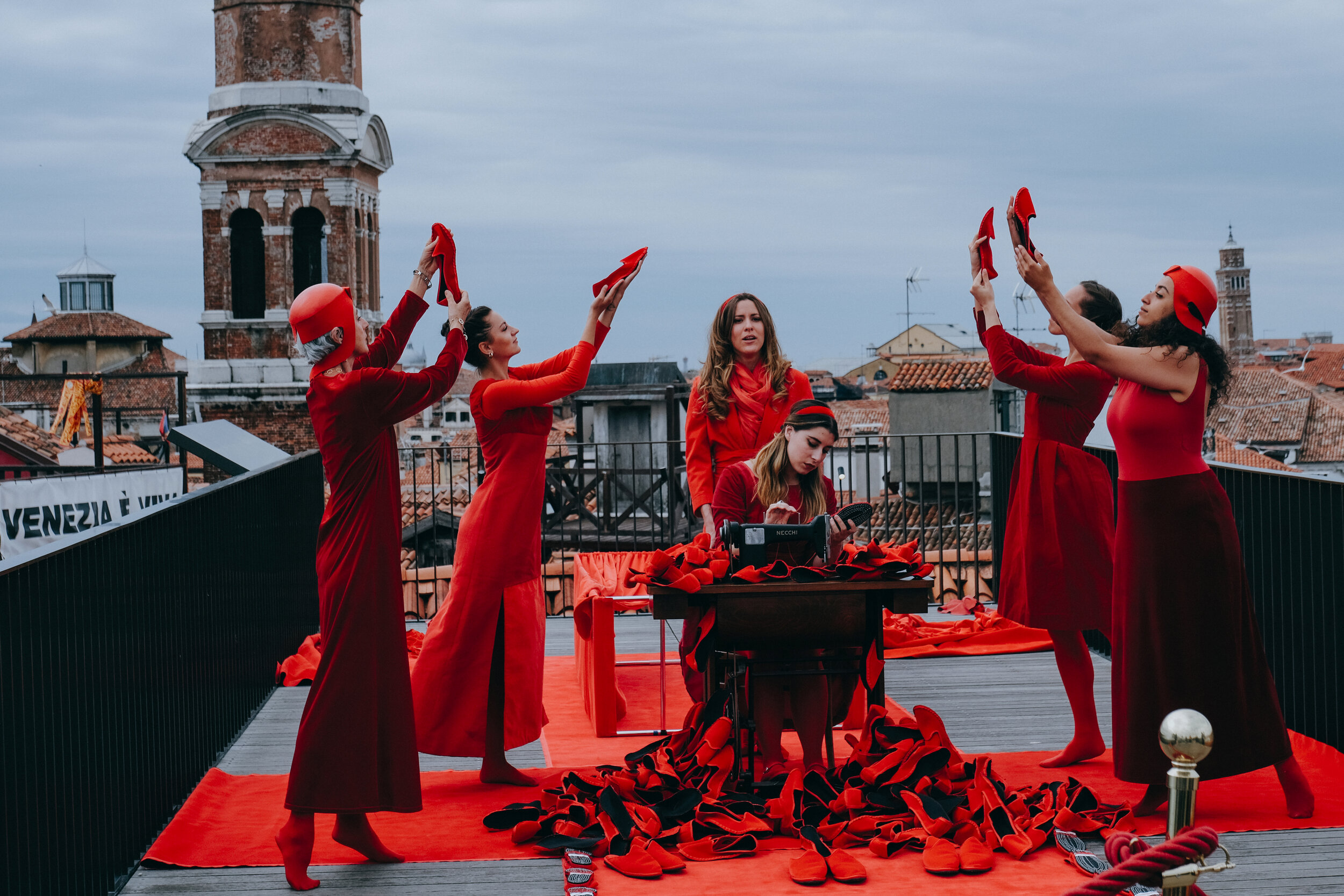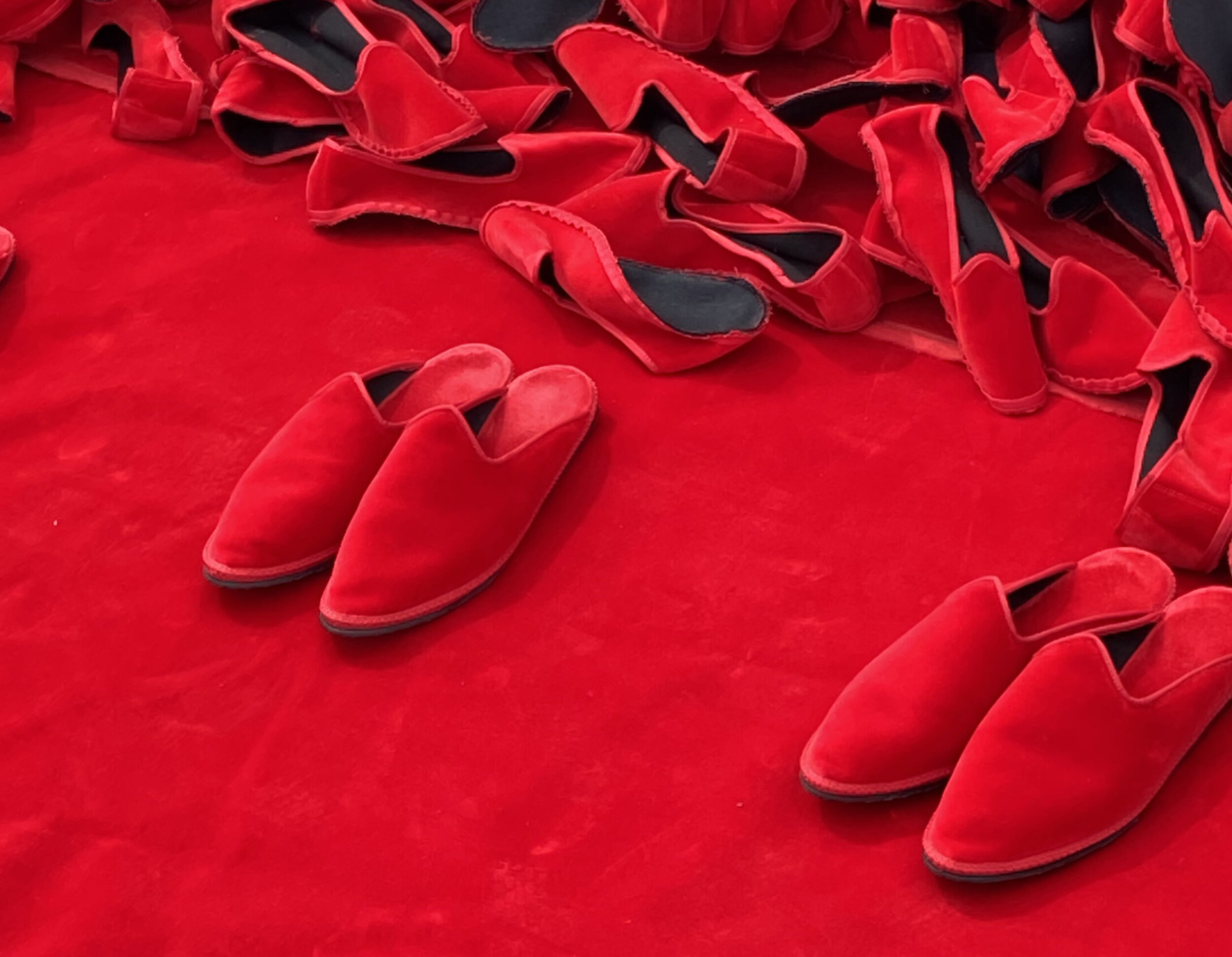Walking on Water
May - June 2021
Site specific live performance by Jo Cope on the roof top of T Fondaco, Venice
Design Biennial curators Francesca Giubilei and Luca Berta
Walking on Water is the performance and installation project of the English fashion designer Jo Cope, created in collaboration with the Piedàterre brand, a specialist in furlane, the original velvet shoes that from Venice have spread all over the world.
The terrace of the T Fondaco dei Tedeschi, a breath-taking stage jutting out over the water of the Grand Canal, is the place where the project came to life, combining the choreographed movements of four dancers, the ancient gestures of a shoe craftswoman and the powerful voice of soprano Lieta Naccari. Through the action of walking and the shoe as a means of expression, the designer investigates nowadays female condition in relation to the stories and paths of the women of the past, who preceded her.
photography: Veronika Motulko
Terrace of T Fondaco dei Tedeschi
May 21 > June 27 2021
Calle del Fontego dei Tedeschi, Ponte di Rialto
Walking on Water
How can we understand more about the history of Venice through the analysis of women condition across the centuries? This is the question that the conceptual fashion designer Jo Cope asked herself, when she was invited to be part of the Venice Design Biennial 2021. Can the answer be found in the path that crosses shoe craft, female habits and the special Venetian way of life?
An inspirational source for her to answer these questions was the book “Working Women of Early Modern Venice” by Monica Chojnacka: this excellent read offers a multifaceted picture of Venetian women in the late sixteenth and the early seventeenth centuries. It gives a great deal of space to widowed, married and single women who, thanks to their independence and social importance, overturn roles and expectations, taking on challenging positions, which are not traditionally attributed to these figures. It is surprising, as Jo Cope notes, to realize how those women exercised control over their own lives. Many of them even owned their own homes, were self-employed and supported other women or their families. It was common for them to move freely in the city to conduct business. Substantially, Venetian women worked, travelled, and overcame obstacles in ways that made the city their own, and that’s what makes the idea around which the project is built so interesting and topical.
Over the years Jo Cope has developed an artistic research focused on shoes as a narrative tool for the evolution of society. In this way she has managed to overcome the boundaries of fashion design as we commonly mean it. Thanks to the experience made with the MA in Fashion Artefact at the London College of Fashion, she was able to deepen her skills, learn the rules of the world of art and fashion, and eventually overturn them by devising extreme and original objects, which have become part of a new chapter of conceptual fashion.
The conceptual designer wants to convey a message of cooperation and unity among contemporary women based on the value of work, which is still inherent in Venetian society, characterized by a diversified female community. The performers, selected to embody the cross-section of today's society, are of different ages, ethnicities and social backgrounds, and in their diversity, they become the spokespersons of an inclusive world. The freedom and emancipation of women described in "Working Women of Early Modern Venice" is transferred to the performance.
The protagonists of this project for the third edition of Venice Design Biennial are a special type of shoes, now internationally associated with the city of Venice: the Furlane. The performance therefore aims to be a praise of Venetian women’s history through the narration of the role played by these historical slippers.
Talking about Furlane's origin, is very old. They have always been seen as the symbol of an economy of survival, full of female strength and dignity. They originated in a poor Friulian context, where women artisans, precise and patient creators, for centuries would make this shoe for a varied clientele: children, adults and only later also for gondoliers when, in the post-war period, a Friulian family made them land definitively in Venice. Walking on Water enhances the value of a centuries-old artisan production, carried out with a slow production. The project also satisfies a personal desire of Jo Cope: being able to relate the artisan practical realization with a conceptual thought in the strict sense, creating a whole that acquires meaning in our daily lives.
Text from the Venice Design Biennial
